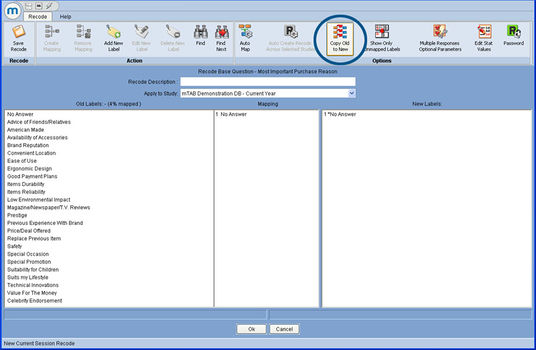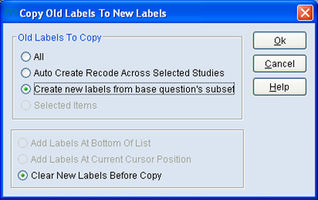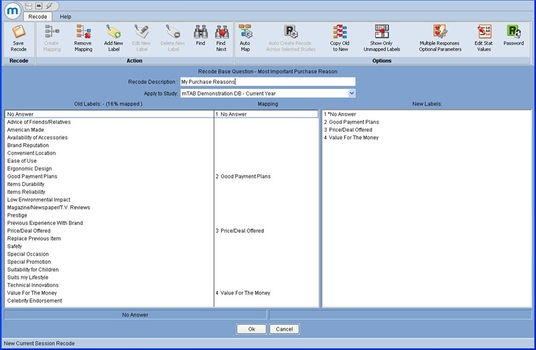Create recode new labels from base questions subset
When working with multiple years of survey data, you often find that the responses to certain questions vary from year to year. There are times where this can be problematic, such as when you have built a tab using a study and then you later decide to add additional studies to trend against.
You may have already spent some time subsetting each of the questions to show just the information you desire and do not want to have to repeat this process. Let's say for example, you have chosen a number of Purchase Reasons to focus on that relate to financial concerns. When you add another study to compare to, this Purchase Reason question turns yellow.
By right-clicking on this question, access the Recode feature and the Recode Editor will appear. Alternatively, you can access the Recode editor by selecting the question and the clicking on the Recode icon in the Question ribbon.
Next, select the Copy Old to New icon at the top of the Recode Editor and this will bring up this dialog.
On this dialog you will see the "Create new labels from base question's subset" radio button. Selecting this option and then clicking OK will start the process.
What it is going to do is to begin by looking at which responses you had subset before recoding. It will then set up New Labels using these subset responses as the labels.
mTAB will map the Primary Study for those responses and will then move to any other studies you currently have selected in Layers and will automatically map those same responses wherever they occur in those studies.
All that remains for you to do is to check the mapping, and then name and save the recode.
By placing this recode in your tab, you will now have your selected responses displayed, fully mapped across all studies selected in your Layer view.
Another very useful application of this feature relates to User Defined Questions. Let's say, for example, that you are attempting to apply a pre-existing User Defined Question (UDQ) to a new study(s). You note that one of the UDQ's component questions appears with a yellow icon, since the underlying responses to that question have changed.
By definition, when you chose to include this question within the UDQ, you subset some of its responses. To appropriately apply the UDQ to the new study(s), a recode must be created to form a common response list on to which both studies responses can be mapped.
This feature offers the ability to take the responses you already had subset, form a recode with them as the new responses and automatically map it across all studies in one easy process, potentially saving you an enormous amount of time.


